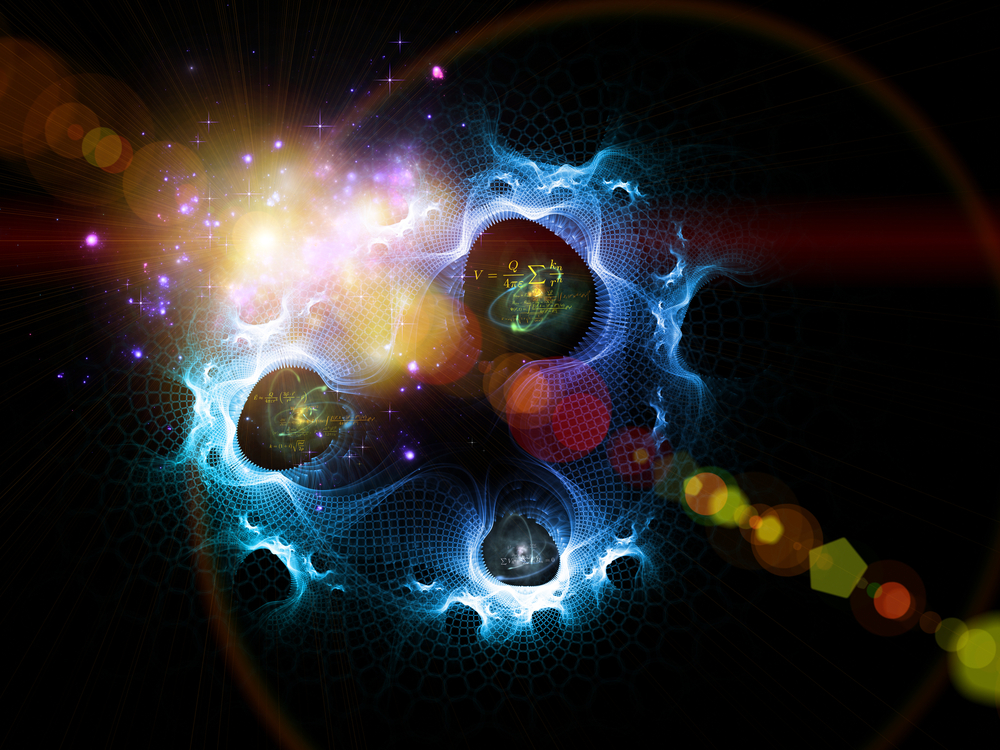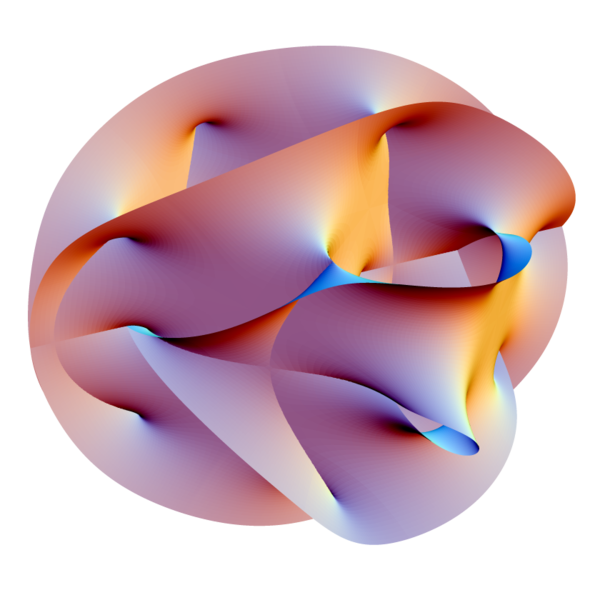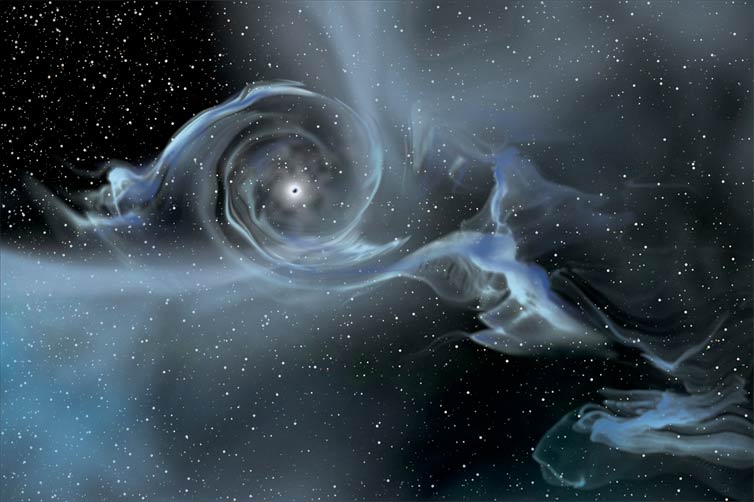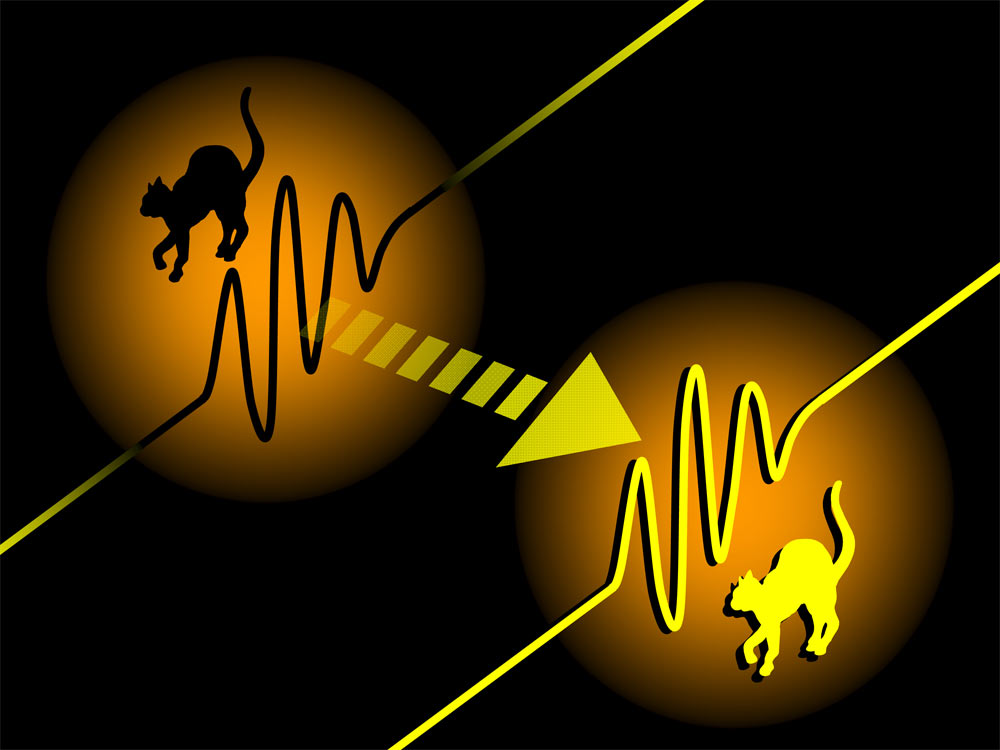What's That? Your Physics Questions Answered

Puzzling Physics

Who was Schrödinger, and what happened to his cat? What exactly is string theory and why should we care? And what is a singularity anyway?
Here are some quick and easy refreshers on those confounding but cool topics in modern physics that everyone should know about.
What is relativity?

"Relativity" refers to two of the most famous theories of physics, both formulated by Albert Einstein. In 1905, Einstein published his special theory of relativity, which established the ultimate cosmic speed limit: the speed of light, and showed that time can speed up and slow down depending on how fast something is moving.
In 1916, Einstein followed up with a broader vision called the general theory of relativity. This idea built on special relativity, and tackled the problem of gravity, completely redefining our understanding of gravity as a warping of space-time itself by massive objects.
General relativity is the most accurate description we have for the movements of galaxies and clusters of galaxies across the universe. It also predicts the existence of bizarre objects like black holes and the phenomenon of gravitational lensing, where light is bent when it travels through curved space-time. For instance, the galaxy cluster Abell 1689 (shown here) is famous for the gravitational lensing effect we see.
What is quantum mechanics?

Quantum mechanics is the reigning theory of physics over the realm of the very small: subatomic particles. The theory was formulated in the early 1900s, and revolutionized the way scientists thought of the ingredients of matter.
In the quantum world, particles are not billiard balls, but rather buzzing, jumping clouds of probability that aren't in one place at one time, and don't travel from point A to point B along a single path. Under quantum theory, particles often behave like waves, and are described by "wavefunctions" that predict what a particle's properties, such as its location and velocity, are likely to be, rather than what they are.
Some of the wackier ideas in physics, such as the concept of entanglement and the uncertainty principle, stem from quantum mechanics.
What is string theory?

String theory (and its upgraded version, superstring theory), suggests that all subatomic particles are not tiny dots, but loops of string akin to rubber bands. The only difference between types of particles is the frequency at which the strings vibrate.
String theory is an attempt to solve the seeming incompatibility of two leading theories of physics — quantum mechanics and general relativity — and forge a "theory of everything" that can describe the entire universe.
The theory is difficult to test, though, and requires some adjustments to our current picture of the universe, namely that there must be many more dimensions to space-time than the four we know. Scientists think it's possible that these hidden dimensions could be curled up so small that we don't notice them.
What is a singularity?

A singularity is a point where space-time is infinitely curved.
Singularities are thought to exist at the centers of black holes, and a singularity is probably how the universe started out at the time of the Big Bang. Inside a black hole, for example, all the mass of a star is condensed inside a teensy-tiny space, maybe even a single point.
Current physics theories suggest this point is infinitely dense, though scientists say that's likely a product of physics breaking down because of the incongruity of general relativity and quantum mechanics. In reality, scientists suspect singularities are incredibly dense, but not infinitely dense.
What is the uncertainty principle?

The uncertainty principle, formulated by German physicist Werner Heisenberg in 1927, is a consequence of quantum mechanics. The principle states that there is a limit to how precisely both the position and momentum of a particle, such as an electron around an atom, can be determined.
This uncertainty arises from two factors. First, the act of measuring something inevitably disturbs that thing, thereby altering its state. Secondly, because the quantum world is not concrete, but based on probabilities, there is a deeper, more fundamental limit to the precision with which a particle's state can be known.
What is Schrödinger's cat?

"Schrödinger's cat" is the name of a thought experiment proposed by Austrian physicist Erwin Schrödinger in 1935 to describe an uncomfortable truth about quantum mechanics: Some properties of particles are not decided until a measurement forces them to choose.
The story goes like this: Inside a box is a cat, along with a small amount of a radioactive substance. In the space of an hour, there is a 50-percent chance this substance will decay and release a poison that would kill the cat, and a 50-percent chance that the substance will not decay, and the cat will live.
According to classical physics, one of those two outcomes occurs inside the box, and becomes known to outside observers after they open the box. But in the bizarre world of quantum mechanics, the cat is neither dead nor alive until the box is opened and an outside observer "measures" the situation. While the box remains closed, the whole system is suspended in a state of uncertainty, with the cat both dead and alive.
The experiment is meant to illustrate the bizarreness of quantum mechanics, which sounds ridiculous when extended from particles to macroscopic objects like cats.
What is entanglement?

Entanglement is one of the most famous predictions of the theory of quantum mechanics. It describes the state of two particles that become so linked that, even after being separated by vast distances, an action performed on one affects the other. It would be like two die that, when rolled, must always show the same number.
The concept disturbed Albert Einstein so much he dubbed entanglement "spooky action at a distance." Yet it's not just a weird prediction, but a phenomenon that's been achieved in experiments, such as one in which scientists entangled two tiny diamonds at room temperature by beaming laser light at them (green in the image). Scientists even hope to build quantum computers someday that take advantage of entangled particles for superfast computing.
Sign up for the Live Science daily newsletter now
Get the world’s most fascinating discoveries delivered straight to your inbox.










